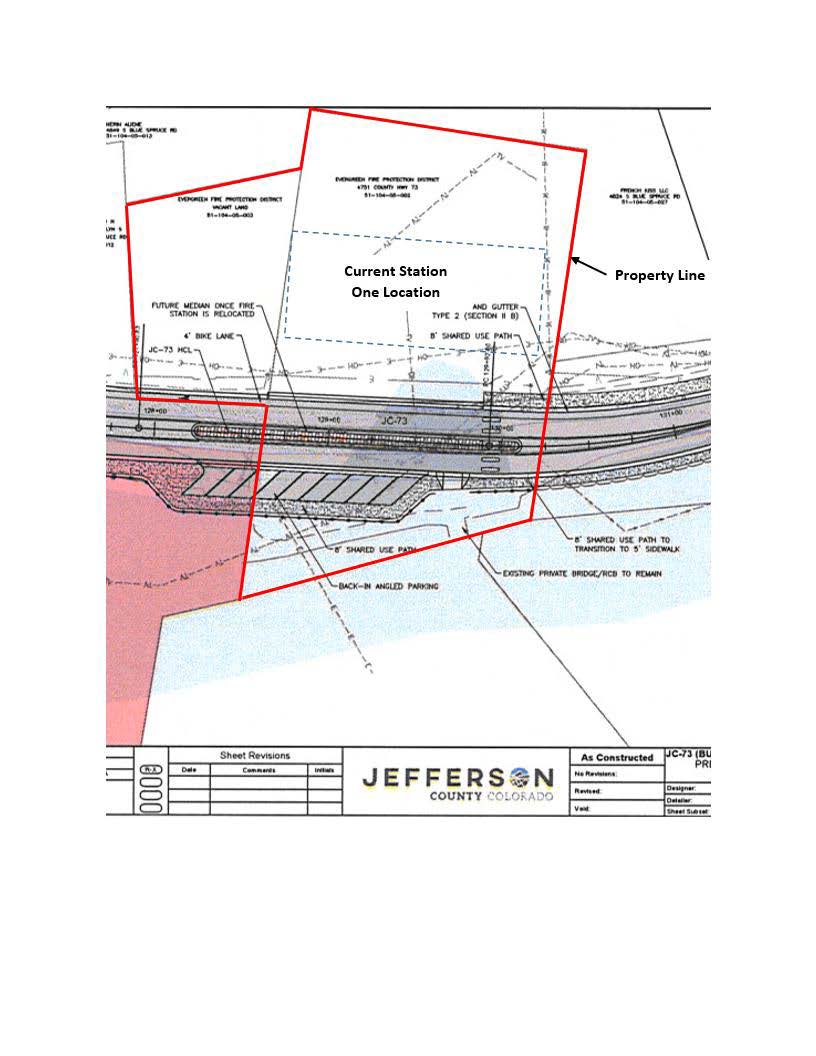The Future of Evergreen Fire Rescue's Station One
Part One – The History of Station One
The Evergreen Volunteer Fire Department was officially formed by residents in 1948. The land for a fire station on Main Street was donated by Mary Quintance. In 1986 the Evergreen Ambulance Service merged with the Fire District. From a population of approximately 600 full time residents in the 1940’s Evergreen grew over the next 40 years to 13,000 and by the year 2000 it had grown to 22,500 residents. The 2020 census shows the local population as approximately 27,000.
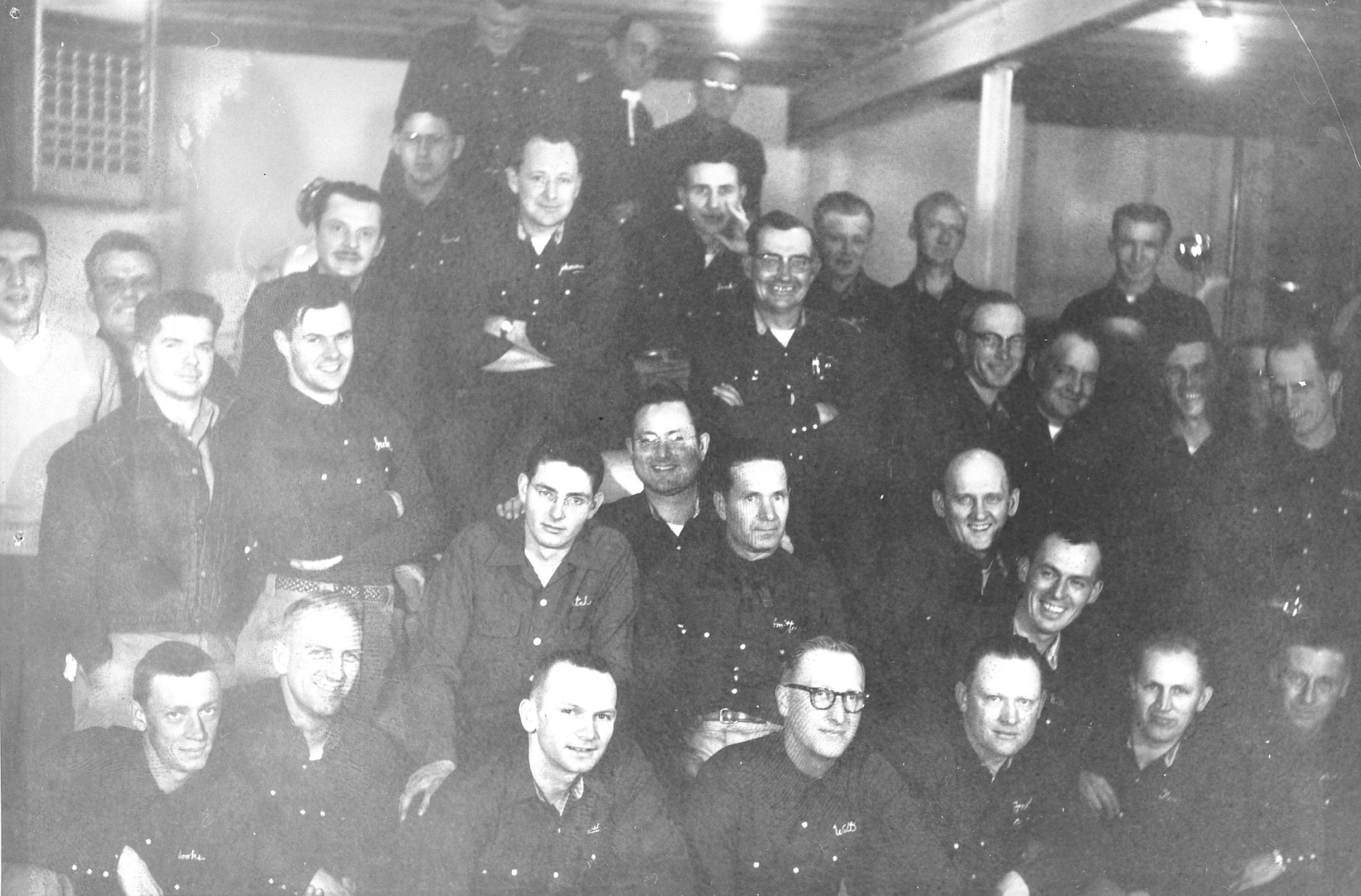
In response to the growth in population and the increased need for protection services, the Fire District built a new a fire station in 1966 to replace the orginal two bays with a seven bay station located on Hwy. 73.
Station Two on Bergen Parkway was added in 1978, Station Four in 1984, and Station Three in Marshdale in 1995. The remaining four stations, built between 2004 and 2006, were added through a bond issue which included adding apparatus. Each station was added in areas that were identified through a study as the best location for response coverage. Today there are seven Fire Stations and one EMS Station housing 26 fire apparatus, four ambulances, administration and support buildings, and a fleet of support vehicles.
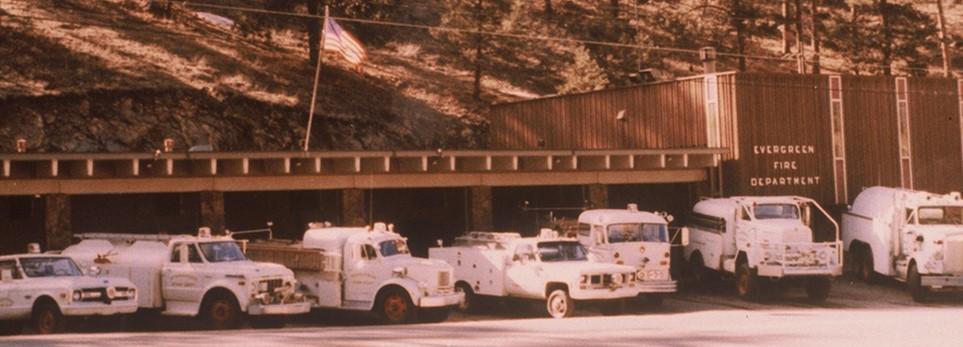 The 2001 Master Plan and the 2014 Strategic Plan identified that any changes to Hwy 73 could make Station One unusable. After 55 years, the time to replace Station One has arrived. Through strategic planning and staying aware of external factors impacting the station location, the district board and Fire Chief Weege have planned for replacement in the future to minimize the impact to the community.
The 2001 Master Plan and the 2014 Strategic Plan identified that any changes to Hwy 73 could make Station One unusable. After 55 years, the time to replace Station One has arrived. Through strategic planning and staying aware of external factors impacting the station location, the district board and Fire Chief Weege have planned for replacement in the future to minimize the impact to the community.
Several factors have driven the decision to begin the process of replacing this station. The largest of these factors is the widening of Hwy. 73 where it passes the station. With the road being widened to include turn lanes, bike lanes, walking paths, and parking areas connected to the downtown area, this will reduce the apron where the trucks are parked in front of the bay doors and eliminate the firefighter parking area on the other side of the road.
The second significant factor is the station bay doors. These are 10 feet wide/10 feet tall leaving the station unable to accommodate the size and type of modern fire and rescue engines. The depth of the bays contribute to the issues for placement of apparatus. The photo below shows one of the fire trucks purchased new in 1966 parked beside a fire engine that was built in 2005. The red line in the photo is the top of the overhead doors. As shown in the photo, if we were able to accommodate taller and longer trucks by remodeling at this location, we would continue to block traffic in order to back in to the bays once the road is widened.
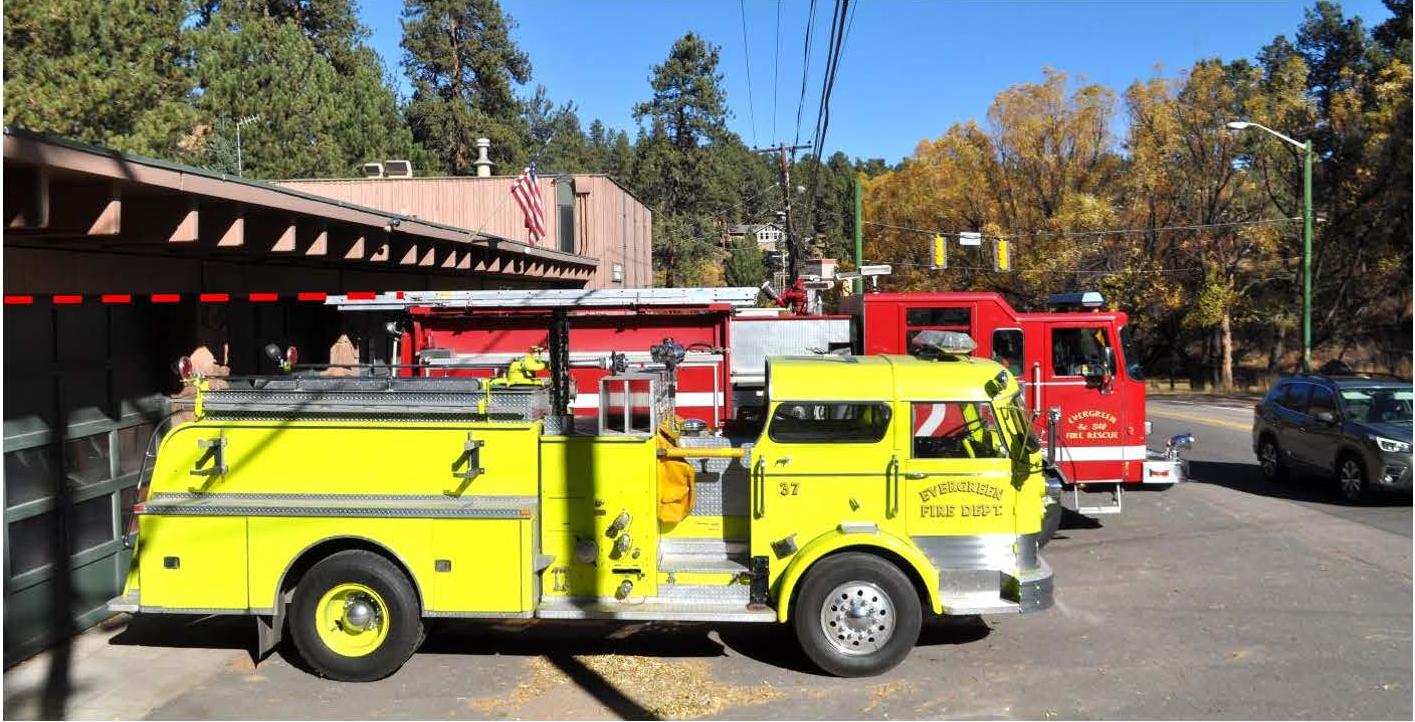 The third significant factor at this location is the asbestos-based materials that were prominently used in construction before 1980 and the electrical/plumbing systems that are failing.
The third significant factor at this location is the asbestos-based materials that were prominently used in construction before 1980 and the electrical/plumbing systems that are failing.
Part Two - EMS in Evergreen
The Evergreen Ambulance Service began in 1952 following an emergency call that required over an hour for an ambulance to arrive from Denver. Leading citizens of Evergreen raised funds for the purchase of a station wagon, converted for patient transports, in order to save crucial time during health emergencies. Some volunteer firefighters took basic emergency medical training in order to participate in this new service to Evergreen residents. Through the efforts of local supporters, with Linda Kirkpatrick spearheading fundraising efforts, the Station 4 EMS property was obtained and the current building was constructed in 1984. In 1986 the Ambulance Service merged with the Evergreen Fire Protection District as an enterprise fund that would be self-supporting. By 2008-2009 EMS had been absorbed as a division of EFR. The mill levy increase approved by voters in 2016, along with providing the means to replace Station 1, the revenue has allowed EFR to fully fund medical services and start the Evergreen Community Assistance Resources and Education Services (ECARES) program.
 The first ambulance
The first ambulance
Station 4
Evergreen’s population has doubled from what it was in the 1980s. A larger population and aging of Baby Boomers has increased call volume substantially. In 2020, just under 60% of the 2,379 total calls were for medical services. At present, the District has 5 ambulances, 12 full-time paramedics, 11 part-time paramedics, 3 nationally certified Community Paramedics, and a Division Chief. There are four paramedics on shift 24/7 with two located at Station 2 and Station 4.
Part Three – Central Evergreen
Evergreen’s historic downtown and surrounding areas are primarily served by two EFR Stations: Station 1 and Station 4. This area also includes Buffalo Park Road and Three Sisters, Bear Mountain, Cub Creek, Hiwan Hills, and a portion of Upper Bear Creek. As part of our annual reporting we collect call response data for the quantity and type of calls from each station. As shown in the table below, in the five years spanning 2016 through 2020, the area covered by Station 1 and Station 4 accounted for almost 31% or 3,510 calls for service. This includes responding to medical emergencies, vehicle crashes, and fires—events that can and do happen on a regular basis. Additionally this data reflects 64% of calls during this period were for EMS services. On-going, careful evaluation of these two stations and their capabilities has revealed opportunities for sustained, higher quality service in central Evergreen by combining these two stations into one. For example being able to have firefighters crewing at the same location where the paramedics are stationed, training together, as well as time spent in relaxation improves the working relationships of the teams. Responding together from the same station can improve response time with the firefighters able to assist the paramedics with additional support, ambulance drivers, or blocking on the scene of an accident.
As part of our annual reporting we collect call response data for the quantity and type of calls from each station. As shown in the table below, in the five years spanning 2016 through 2020, the area covered by Station 1 and Station 4 accounted for almost 31% or 3,510 calls for service. This includes responding to medical emergencies, vehicle crashes, and fires—events that can and do happen on a regular basis. Additionally this data reflects 64% of calls during this period were for EMS services. On-going, careful evaluation of these two stations and their capabilities has revealed opportunities for sustained, higher quality service in central Evergreen by combining these two stations into one. For example being able to have firefighters crewing at the same location where the paramedics are stationed, training together, as well as time spent in relaxation improves the working relationships of the teams. Responding together from the same station can improve response time with the firefighters able to assist the paramedics with additional support, ambulance drivers, or blocking on the scene of an accident.
Part Four – A New Location for Station 1
The EFPD Master Plan published in 2001 identified many problems with the current Station 1. The station was constructed in 1965 with 7,780 square feet on 0.8 acres. The Master Plan noted that traffic on Highway 73 had increased from 6,500 vehicle trips per day in 1972 to 22,500 trips by 1997. With the doubling of the Evergreen population since 1980, vehicle trips have increased. Congested traffic makes getting in and out of the current station precarious for first responders—from trying to cross the highway on foot from the parking area on the opposite side of the street to the difficulties of having adequate warning to stop for the fire trucks or firefighters exiting the station.
Following voter approval of a mill levy increase in 2016, EFR conducted an intensive evaluation to determine the best method for replacing the current Station 1. The driving criteria were largely about space. What option would provide the best ability to support personnel and store, maintain, and rapidly deploy seven fire apparatus?
The first option was keeping the station on the existing site. Creating the necessary space at the current location would require extensive site work as the station would need to be built deeper into the hillside. While possible, two factors made this option untenable:
- Even with substantial site work, there would be no ability to expand the station further if doing so became necessary in the future.
- The planned widening of Highway 73 in front of the current station would further constrain the total space available.
The second option was expanding Station 4 to house both its current Emergency Medical Services (EMS) staff and vehicles, and the fire apparatus from the current Station 1. Space once again became a factor. The Station 4 property was not large enough to accommodate all of the Station 1 apparatus.
EFR began looking at properties between the current Stations 1 and 4 that could provide enough room to accommodate current facility needs, as well as those that may arise in the future. The property formerly known
as Anderson Market, or Mountain Market, became available along with two other properties. Located roughly
halfway between the current Stations 1 and 4, the location also can be accessed from both Buffalo Park Road and Highway 73.
Given the amount of available space and relative distance between Stations 1 and 4, EFR purchased the properties using funds from its Station One Reserve Fund, completing the purchase of the entire site in 2020. This acquisition now provides EFR with excellent opportunities detailed in the next installment of The Future of Station One.
Part Five - Consolidation and Flexibility
The planned consolidation of Stations 1 and 4 creates flexibility for the community and the EFR team. The new Station 1 property is large enough to accommodate a total of ten bays. The station can be constructed to adequately house seven fire apparatus from the current Station 1 as well as the two ambulances and a utility/snowplow truck currently kept at Station 4. Consolidating the crews and the equipment in one building will improve response, getting us to your emergency quickly and in unison.
Additionally, the new Station 1 will include areas for a 24/7 EMS crew to work, sleep, shower, and eat while also providing space for firefighters to stay overnight, work, and share down time. This gives volunteer firefighters the ability to spend more time at the station, allowing them to respond quickly to support the paramedics or roll the fire apparatus when needed.
A critically important improvement offered by the new Station 1 is a healthy facility for first responders. The current Station 1 lacks an adequate vehicle exhaust system in its garage bays. Without a way to actively ventilate the bays, crews are exposed to higher concentrations of harmful emissions. The new Station 1 will be equipped with an exhaust system to greatly reduce this issue. Companies such as Plymovent, Nederman, and others, manufacture exhaust systems designed to attach to the vehicle exhaust magnetically and disengage as the truck pulls away.
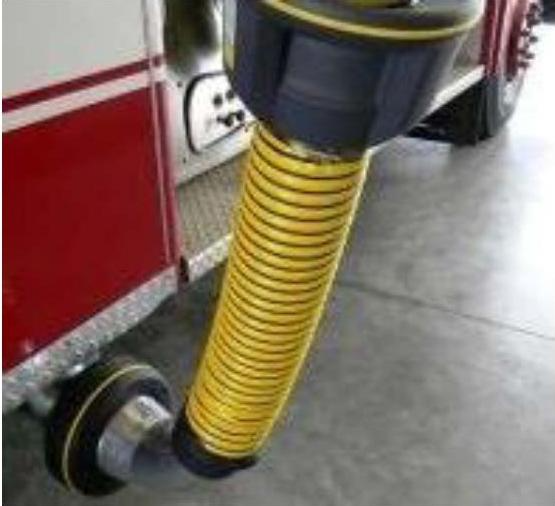 Plymovent System
Plymovent System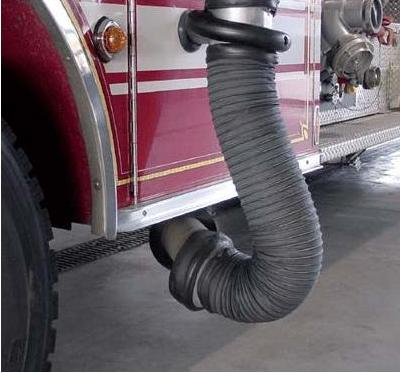 Nederman System
Nederman System
Additionally, the new Station 1 will provide space for “hot” and “cold” areas. Firefighters often come into contact with harmful, cancer-causing chemicals or particulates when responding to calls, especially when exposed to smoke. These chemicals can embed themselves into equipment and protective gear. The new Station 1 will be equipped with designated “hot” areas where special extractors and dryers are used to decontaminate gear. “Cold” work and living areas are separated from where gear and apparatus are stored to reduce cross-contamination. This is an increasingly vital health and safety improvement, and an important commitment to current and future first responders.
By consolidating two stations into one, the District gains flexibility with the current Station 1 and Station 4 properties. EFR will examine possible uses for these properties. There may be advantages to retaining the properties as they could provide additional equipment storage, or house seasonal crews. Sale of the properties will also be considered.
Part Six—Investment in Station 1
Upon voter approval of a mill levy increase in 2016, EFR began a diligent process of setting aside a portion of annual revenue into the Station One Reserve Fund in 2017. The fund was used to secure the location for the new Station 1 and will continue to be used for the design and construction of the new station. We hope to deliver this upgraded facility to Evergreen residents without the need for additional financing through bonds.
Through careful budgeting and project management, the total cost of replacing Station 1 (property purchase, building design and construction, etc.) is budgeted at $8 million. This factors in a projected cost per square foot and aligns with the actual cost of similarly sized stations in other districts constructed in recent years.
We are prioritizing energy-efficient standards for construction of the new station. Just like the residents and businesses of our community, the cost of heating and cooling our buildings has risen over the years. We are very conscious of our natural resources and we aim to protect those resources by selecting energy-efficient HVAC systems for the new station.
The cost of building materials fluctuates each year with the cost of steel and concrete being the largest impact on this project. Station 1 will be designed with low maintenance materials, such as siding and roofing, to reduce the cost of upkeep over time. All materials, including windows and doors, will be selected based on their ability to withstand the temperature extremes we experience in Evergreen.
Work-life balance is integral to everyone’s physical and mental health. Living space for the paramedics and firefighters will be designed to give those who work and stay overnight in the station good light and ventilation in the communal day room, kitchen, office space, and sleeping rooms.
With a minimum life expectancy of 50 to 75 years, the new Station 1 building and property will allow for the possibility of future expansion, ensuring the station will not need to be relocated again in the foreseeable future.
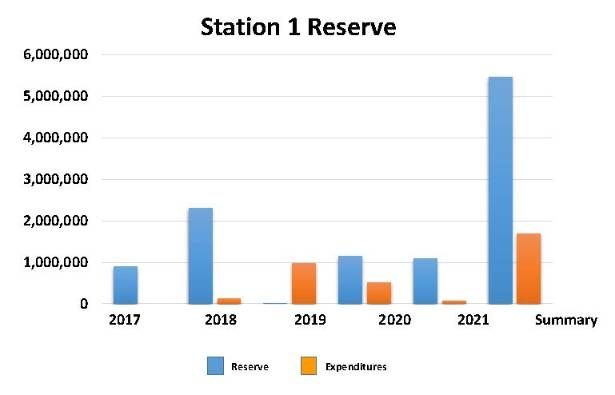.jpeg)
Part Seven - Station 1 RFP Process
A Request for Proposal (RFP) was published on December 9, 2020, with a legal notice on the fire district website and on the website for Bidnet Direct. Additionally, the RFP was emailed to vendors that had previously contacted us to express interest.
We were notified by 24 groups of their intent to participate in our process. We next scheduled site visits with each group over 4 days in January of 2021. During the site visits, we captured questions that we had not addressed in the original RFP, and we issued an Addendum on January 22nd to provide all vendors the same information. We issued a second addendum on February 18th in response to additional questions that were submitted following the site visits.
A total of 13 proposals were received by the deadline on March 15, 2021. Each proposal was reviewed against the criteria that were requested be included. One proposal failed to meet the requested submittal requirements and was excluded from the process. The remaining 12 proposals were provided to the division chiefs and to the two district board members assigned to the building committee for review. The review committee was requested to select the top proposals they felt best meet the needs and expectations established in the RFP. The committee agreed on the top 4 proposals. These 4 groups were invited to present their proposal to the building committee and answer questions on April 20th and 21st.
Following the presentations the committee eliminated one proposal. Site visits were scheduled to fire stations that had been constructed by each of the three remaining groups in May. The committee discussed their impressions of the stations visited, pros and cons of the station, as well as the conversations that were had with either the project lead for the fire district that was visited, or the firefighters on shift at that station during the visit. The committee agreed on the top two proposals and subsequently a consensus was reached to make a recommendation to the District Board that a contract be pursued with the group F+D International and Symmetry Builders Inc. as a design-build team.
Throughout this process the district board was updated each month on the status of items related to Station 1 as part of the Chief’s report. These items included updates on the status of the land owned by Denver Mountain Parks adjacent to the primary properties where Station 1 will be constructed, how many site visits and proposals were received, etc. The 3 board members that were not serving on the building committee were provided with copies of the RFP, its addendums, and the top proposals to review. At the June 8, 2021 Board meeting Chief Weege presented the recommendation of the building committee that the design team, F+D International with Symmetry Builders, be accepted by the Board and that a contract be initiated. The Board engaged in some discussion about the merits of the proposals and heard comments from the community over the intent to use funds from strategic capital to construct the station. Director Anderson made a motion to accept the recommendation of the building committee, seconded by Director Gregory, the motion carried. Chief Weege was directed to move forward with contract negotiations .
A contract was signed with F+D International for the design and project management of the construction for Station 1 in October 2021. The building committee has continued to meet monthly working with the architects on the conceptual design for the new station.
~EvergreenFireRescue.com
Selling Your Home?
Get your home's value - our custom reports include accurate and up to date information.





